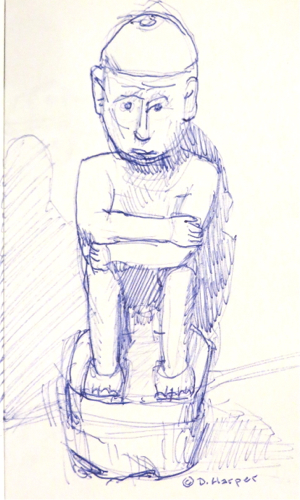
Above: Sketch of a “ceremonial deity,” Philippines, c. 1930. Wood and shell. Asian Museum of Art.
One of delights of going to the Asian Art Museum in San Francisco is seeing the diversity of depictions of deities. Today I particularly noticed the unnamed deities — like this sculpture of an unnamed ceremonial deity, made in the Philippines around 1930. Why do we not know the name of this deity? Is it because it is a minor deity, and thus not widely identifiable (though perhaps readily identifiable by a devotee)? Did it never have a name that could be spoken by humans? Or was this a deity like the Roman Lares familiares, the household gods, who don’t seem to have had names, or whose power was so geographically restricted that their names perhaps were known only to the household they protected?
I think that the end of Christendom is allowing us to see such minor deities more clearly. In the worldview of Christendom, only the major deities — the wildly transcendent deities, Jehovah’s direct competition — were worthy of serious attention. Now maybe we can pay a little more attention to the many minor deities who inhabit the metaphorical space between those distant transcendent deities and mortal creatures.
